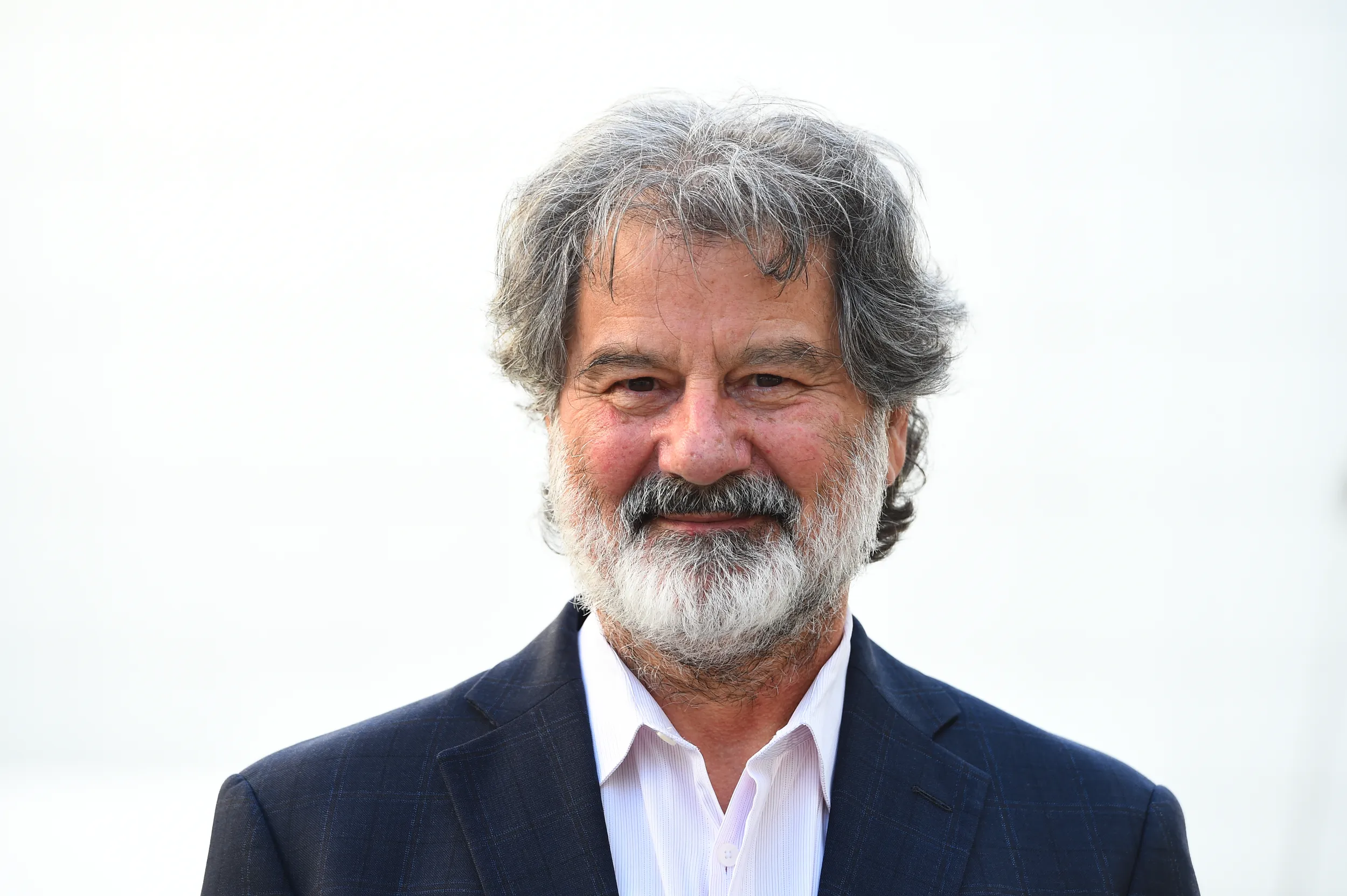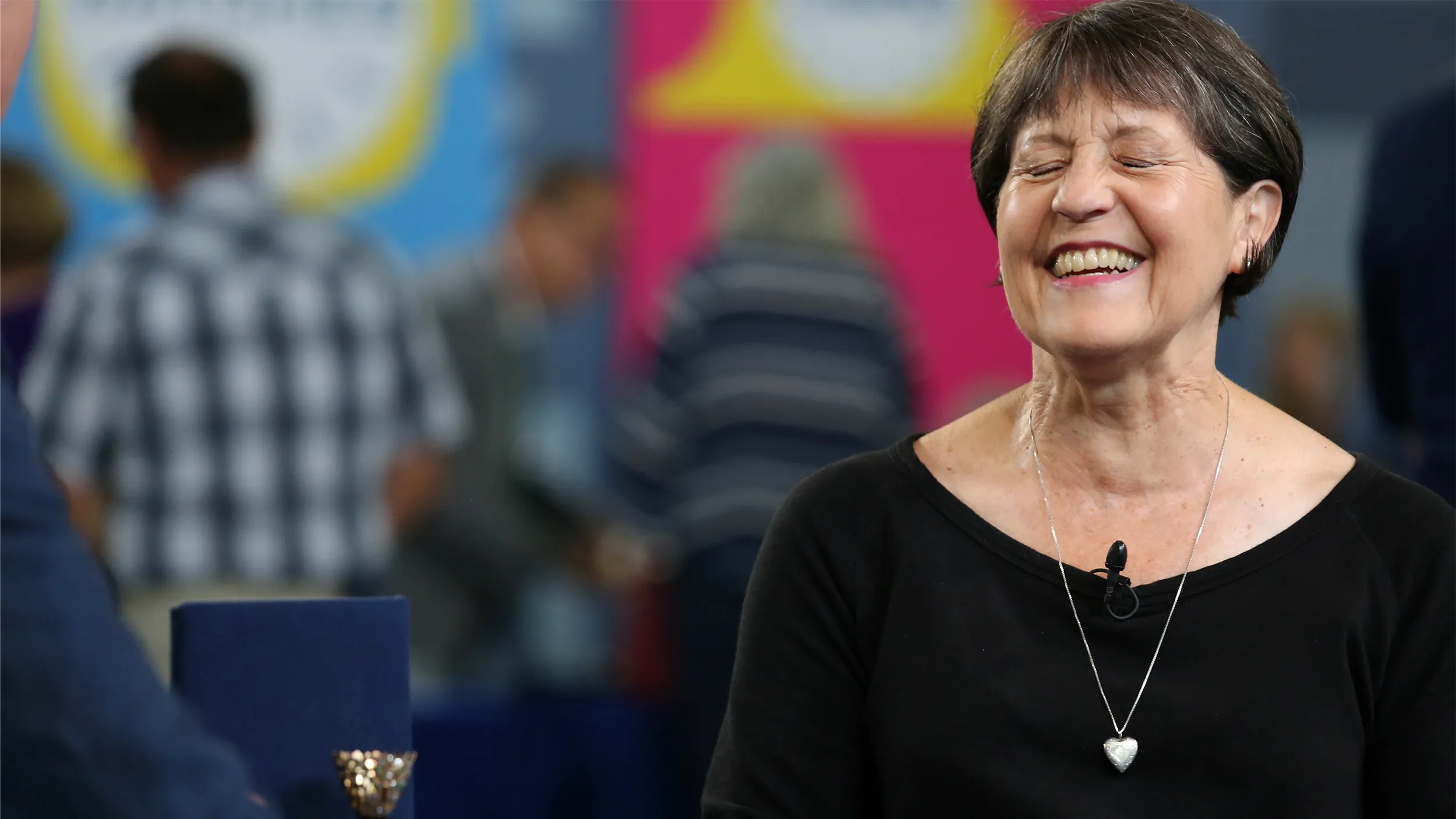GUEST: I have a Ute water jug that belonged to my grandmother, along with a coin silver bracelet, and a small beaded purse that she got for a fifth birthday present.
APPRAISER: Where was that?
GUEST: Myton, Utah.
APPRAISER: And what brought your grandparents to Utah?
GUEST: Well, they were actually just on a short vacation. My grandparents had met in about 1917, and soon decided they wanted to marry, but my great-grandparents didn't approve. So they took her on a tour of the West. My grandfather later caught up with them and they married.
APPRAISER: This is your grandmother.
GUEST: Yes.
APPRAISER: This is the trading post in Utah.
GUEST: Trading post where she got the items.
APPRAISER: We have three different distinct cultures, all from the Southern Plains here. The water bottle may not be Ute, although it could possibly be. I think it's more likely Apache. It's a domestic object. It's part of their material culture. It's made from split root. The bottom is suffused with sap, perhaps pine sap, pine resin. That would make it waterproof. The handles are horse hair. So it's all indigenous materials from the Southwest, and it would've kept water in it. Not made for trade-- made for Native use.
GUEST: Mm-hmm.
APPRAISER: The little pouch is a different tribe, a neighboring tribe of the Apache. I believe it's made by the Ute.
GUEST: Mm-hmm.
APPRAISER: That little design in the middle represents a peyote button. It would contain a cactus bud known as peyote, or peyote bud, and this would have hallucinogenic qualities, and it would help elevate the individual who ingested it to a rapid advance to the spirit world, if you will.
GUEST: Mm-hmm.
APPRAISER: The beads are from Venice, Italy.
GUEST: Oh, really?
APPRAISER: They were traded to the tribes across North America, typically for beaver pelts, deer pelts, buffalo hides. The hide is brain-tanned leather, deer hide.
GUEST: Mm-hmm.
APPRAISER: The bracelet is Navajo.
GUEST: Mm-hmm.
APPRAISER: And the bracelet, in many respects, reflects a number of cultures. The silversmith and blacksmithing trades came up from Mexico along the Santa Fe Trail, into Sante Fe, up to Taos, and then throughout the Plains.
GUEST: Mm-hmm.
APPRAISER: So it's an acculturated medium-- work of silver, work of steel. It's a marvelous technique and a marvelous application for Plains Indian people. There was no metal culture prior to a certain date. All of these objects created pretty much in the second half of the 19th century.
GUEST: Mm-hmm.
APPRAISER: Have you had these appraised?
GUEST: I had a collector look at them a number of years ago.
APPRAISER: What did they think?
GUEST: She was impressed, she liked them.
APPRAISER: I don't blame her, you know?
GUEST: Mm-hmm.
APPRAISER: What numbers did she assign, for example, to the basket?
GUEST: I think we were at about six for the basket.
APPRAISER: Six...
GUEST: And...
APPRAISER: $600.
GUEST: Six... Yes. $600 for the bracelet, and $300 for the purse.
APPRAISER: Okay. And how many years ago was that?
GUEST: Oh, I would say that's close to 20 years ago.
APPRAISER: All right. Things have developed, maybe, somewhat. In some of these areas. The Apache water container, today, on a retail basis, I think would command between $400 and $500.
GUEST: Mm-hmm.
APPRAISER: Perhaps a little bit more. The ceremonial peyote pouch of the Ute, in a similar range of value, I think maybe $450 to $500.
GUEST: Mm-hmm, mm-hmm.
APPRAISER: The bracelet, you thought around $600, or your appraiser did?
GUEST: Right, mm-hmm.
APPRAISER: The bracelet is early, perhaps as early as 1880. Much earlier than what we typically see, and we see a great deal of Navajo silver on the "ANTIQUES ROADSHOW." There are tens of thousands of objects made by the Navajo for sale. This bracelet, I believe, is made for a Navajo to wear themselves. There was not very much Navajo silversmithing before the 1870s, so in a certain sense, this is at the dawn. We look at the bracelet really carefully. These little circular devices are stamped with the edge of a file. One after another, so there are sets of four there. That would take four strokes, just to make that one little design unit. At a later date, there would be a die stamp that would incorporate all of the design with one stamp.
GUEST: Ah-hah.
APPRAISER: So this is handmade with a hammer and a cold chisel. It shows a tremendous amount of wear. Somebody had that on their wrist for a long time.
GUEST: Long time, mm-hmm.
APPRAISER: I think in today's market, on a retail basis, that bracelet would readily sell for, I think in the neighborhood of $4,500.
GUEST: Oh, wow. She carried her Sunday school money in the purse.



